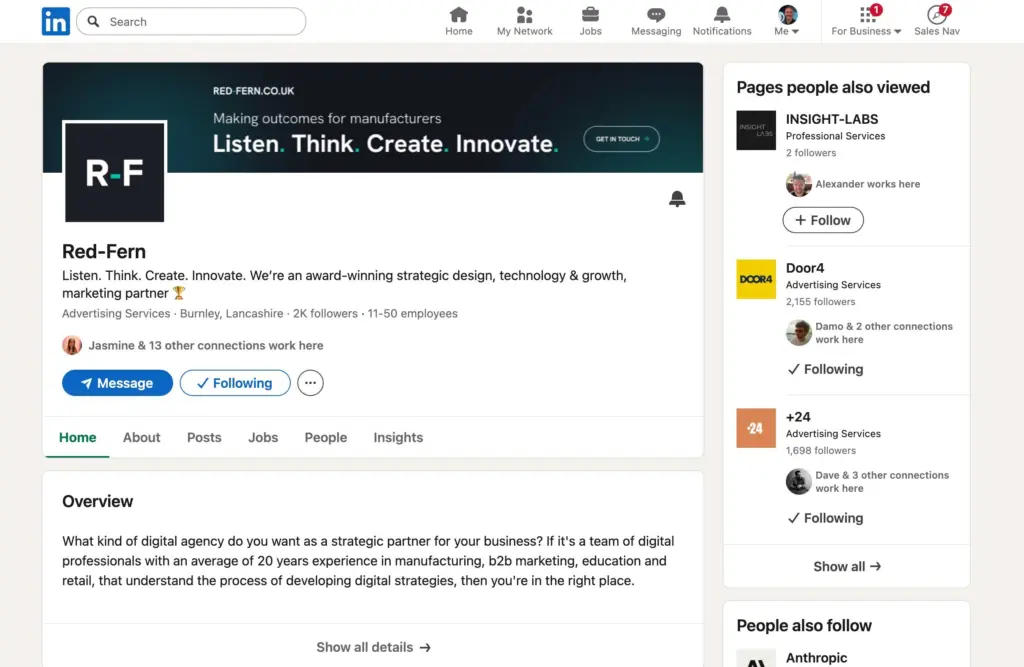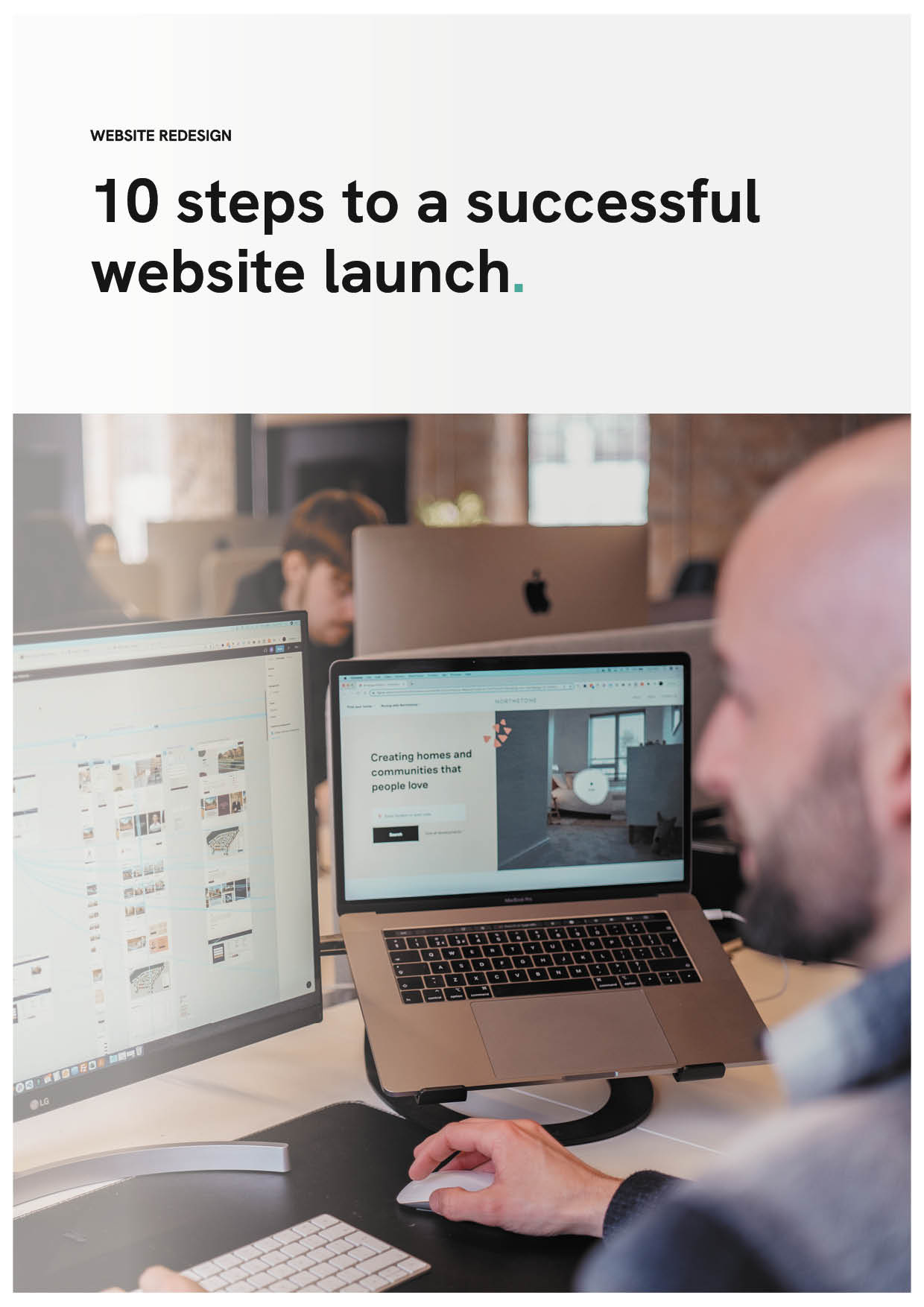Forget wasting money on exhibitions, LinkedIn is your new exhibition hall.
No time to read this article, why not listen to the audio conversation.
LinkedIn has become an integral part of B2B manufacturing digital marketing, not just the Paid Media approach, but also the natural organic posting. The platform is no longer just for job seekers and recruiters; it’s now an ecosystem where manufacturers can build authority, nurture relationships, and drive real business results by growing their brand and knowledge.
For manufacturing leaders seeking to future-proof their marketing and sales efforts, leveraging LinkedIn is not just an option—it’s essential.
Why LinkedIn matters for B2B manufacturing
Manufacturing is mainly a relationship-driven industry.
Buyers are cautious, sales cycles are long, and trust is paramount. LinkedIn can providee a unique space where manufacturers can showcase their expertise, foster credibility, and engage directly with decision-makers, from engineers and procurement managers to C-suite executives.
Unlike broader social platforms, LinkedIn’s targeting capabilities allow manufacturers to connect with highly specific audiences based on job title, industry, company size, and even seniority. This precision is invaluable for manufacturers with niche offerings or complex solutions.
Success on LinkedIn isn’t about broadcasting sales pitches. The platform now rewards brands that spark conversations, provide genuine value, and build communities around shared interests and industry challenges.
Building a high-impact company page
Your LinkedIn company page is often the first digital touchpoint for potential partners and customers. Like your own website, it is a shopfront to your brand and business, and first impressions count.

A high-impact page should feature a professional logo, a compelling banner image, and a keyword-rich “About” section that clearly communicates your unique value in the manufacturing sector.
Don’t overlook the “Products” tab—this is a space to showcase your solutions, highlight technical capabilities, and direct visitors to relevant resources or landing pages.
Regularly update your page with fresh content, and encourage your team to follow and engage with your posts to amplify reach organically.
Create content that will help you convert
Content is the engine of LinkedIn success, but not all content is created equal. In 2025, the platform’s algorithm favours posts that drive engagement and spark meaningful conversations.
For manufacturers, this means moving beyond product announcements and embracing content that educates, informs, and inspires your target audience.
Long-form content is making a comeback, especially through LinkedIn Newsletters. These allow manufacturers to deliver in-depth insights, technical guides, and industry analysis directly to subscribers’ inboxes, bypassing the crowded main feed.
Every newsletter publication sends a notification to subscribers, ensuring your content gets seen.
Short-form video is also on the rise, with engagement growing year-on-year. Videos showcasing your production process, customer success stories, or behind-the-scenes glimpses of your team humanise your brand and drive higher engagement rates.
Carousels, infographics, and interactive content, such as polls or LinkedIn Live streams, offer additional ways to capture attention and foster two-way conversations. The key is to serve your audience’s needs, not just your own agenda.
Become a thought leader and build your community
In manufacturing, authority and trust are everything. LinkedIn is the ideal platform for positioning your company and its leaders as industry thought leaders.
Share original research, data-driven insights, and predictions about where manufacturing is headed. Publish founder stories, leadership lessons, and lessons learned from the shop floor to the boardroom.
Engage in industry-specific conversations, join relevant groups, and don’t shy away from sharing your perspective on emerging trends and challenges. The more you contribute to the community, the more your brand will be seen as a go-to resource.
Personalisation is key
B2B buyers expect personalised experiences, this is where LinkedIn can be invaluable.
Use the platform’s advanced targeting to share content that speaks directly to the needs and pain points of your ideal customers. This could mean segmenting your audience by industry vertical or job function and tailoring your messaging accordingly.
LinkedIn’s Sales Navigator and account-based marketing tools allow you to identify key decision-makers within target businesses, engage them with personalised messages, and nurture relationships over time. Assigning a marketer and salesperson to each account for a dual-touch approach can dramatically improve engagement and conversion rates.
Get your employees on board
Your employees are your greatest brand ambassadors. Encourage your team to share company updates, engage with posts, and participate in industry discussions.
This not only boosts organic reach but also adds authenticity to your brand’s presence. LinkedIn’s algorithm favours active, engaged profiles, so regular interaction from your team helps keep your company visible.
Measuring success and continuous improvement
Like all marketing channels, LinkedIn success requires ongoing measurement and refinement. Track key metrics such as post engagement, follower growth, website clicks, and lead conversions. Use these insights to refine your content strategy, double down on what works, and experiment with new formats.
A/B testing different post types, headlines, and calls-to-action can reveal what resonates most with your audience. Stay agile, monitor industry trends, and be ready to adapt as LinkedIn’s features and algorithms evolve.
Avoiding common pitfalls
It’s tempting to treat LinkedIn as just another channel for press releases or product launches, or not even at all.
The trend that Red-Fern are seeing is that manufacturing buyers are looking for partners, not just suppliers. Avoid hard-selling tactics and focus instead on building relationships, sharing expertise, and solving real-world problems for your audience.
Don’t neglect the visual side of your brand. High-quality imagery, professional videos, and consistent branding across your company page and posts reinforce credibility and help your brand stand out in a crowded feed.
Continually refreshing images with high-quality imagery will also help your business to avoid brand fatigue.
The Red-Fern strategy is to take a strategic, human, results-driven approach
At Red-Fern, we believe that LinkedIn is one of the most powerful digital tools for B2B manufacturing success when approached with strategy, creativity, and a human touch.
We work alongside manufacturing leaders to build standout company pages, craft compelling content strategies, and activate employee advocacy programs that drive measurable results.
Our approach is pragmatic and collaborative. We focus on understanding your unique market, identifying your ideal customers, and creating value-driven content that positions your business as a trusted industry authority.
If you’re looking for a partner who understands the manufacturing sector and knows how to unlock LinkedIn’s full potential, Red-Fern is ready to help. Let’s start building your B2B manufacturing success story, one connection at a time.


